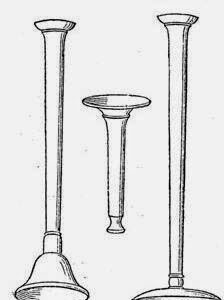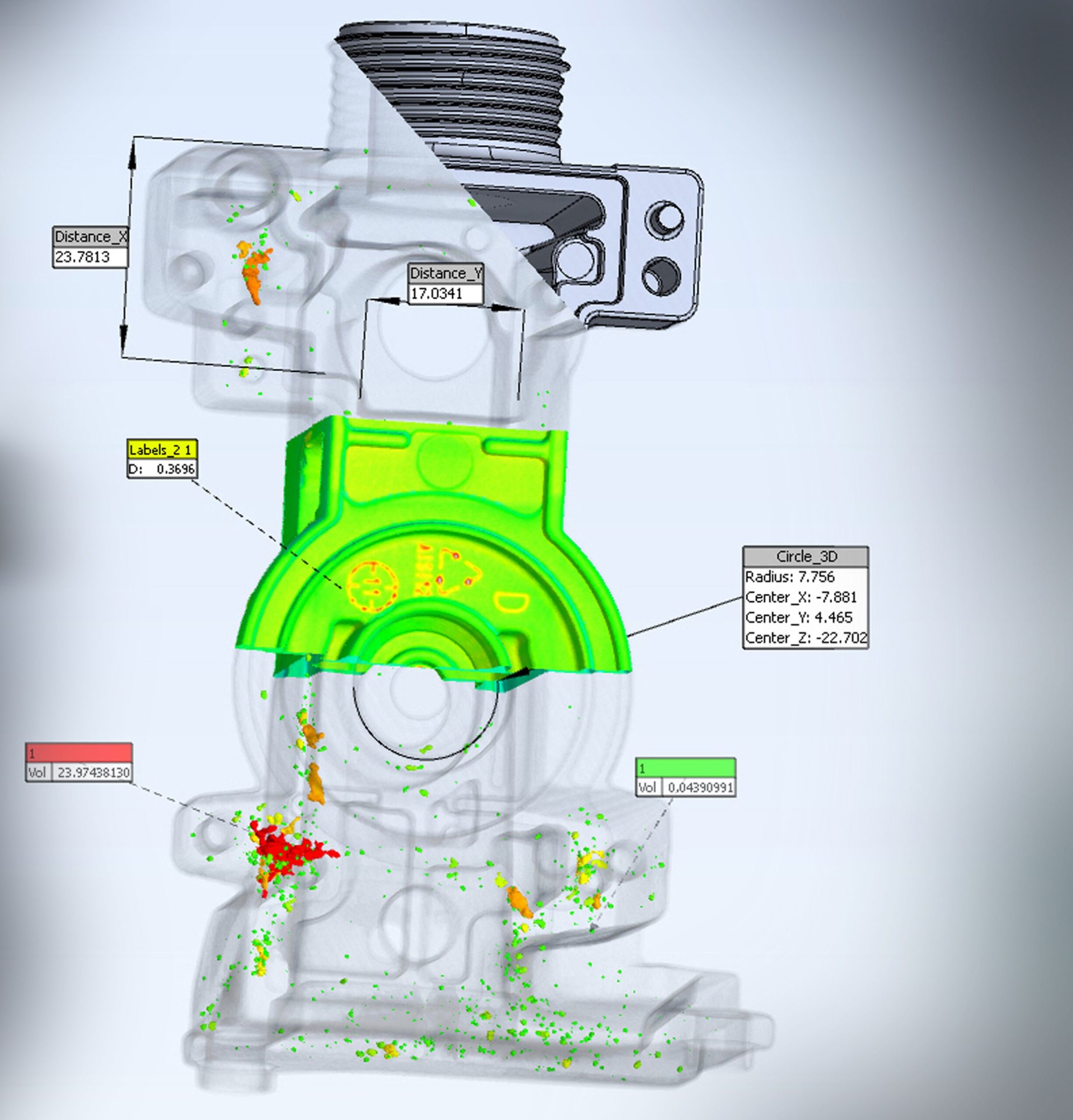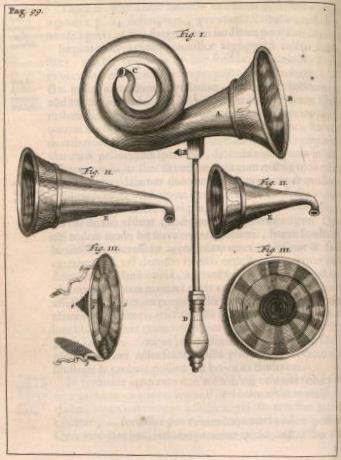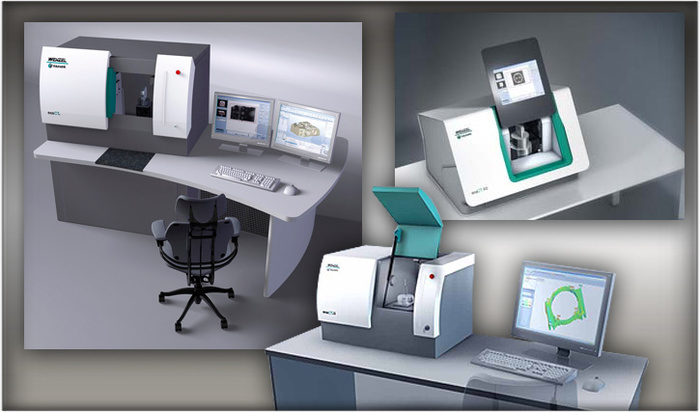
What do these question mean to your process today?
- How valuable would it be to look inside a completed product or components?

- What would it mean to your quality?
- What would it do to increase production process efficiency?
Computed Tomography gives hearing instrument manufacturer inside look
A leading hearing aid manufacturer uses the WENZEL Volumetrik exaCTS desktop computed tomography system to do just that. Being able to nondestructively look inside the completed hearing instruments makes quality assurance faster, more precise and more reliable.
Telephones, transistors and tiny tech – Brief history of hearing aids
The development of hearing instruments started with the first stethoscopes and hearing trumpets in the late 1700s and 1800s.

German-engineered stethoscopes from the 1800s.

An 18th-century drawing of ear trumpets.

German engineered hearing aids from the 1920s-1950s. They include an attachment similar to a telephone server. Photo from Museum of Medicine, Berlin, Germany.

After the telephone was invented electrically powered hearing aids soon followed utilizing telephony and vacuum tubes. With the transistor, hearing aids began to really shrink and become truly portable. Bringing us to today’s technology, with hearing aids so tiny they can be worn nearly invisibly due to their low weight and small size.
With this increasing miniaturization every component of the hearing aid has become ultra tiny, making 3D scanning even more challenging. Everything from the microphone to the amplifier, loudspeaker is so small that any normal 3D scanning method falls short or destroys the components.
Even determining the integrity and porosity of the minuscule injection-molded plastic case is a problem needing to be solved. Industrial Computed Tomography offers the best possibility of analyzing the interior and exterior of these small and complex components for defects. Computed Tomography – 3D Scanning. Wenzel America exaCT S.
Wide range of applications
- Computed Tomography was this hearing instrument manufacturer’s solution to all of these measurement problems and then some.
- CT is used to check the quality of ongoing production
- CT machines are part of the support of the start-up production
- They use computed tomography in the development of new hearing instruments
- CT is used in developing new single components to improve quality
- CT is also used to increase quality of the injection molding of plastic parts
- Detect defects and deformations during assembly
Finished and functioning hearing aids and small modules are often analyzed for correct assembly and for possible deformations while assembling the parts. At the single component level, the smallest structures and complex features can be 3D scanned. The tolerances are very tight, so the highest precision is required.
Complex parts require exaCT measuring solutions
Because of the complexity and number of types of measurements needed the company went through a very  rigorous selection procedure before coming to Computed Tomography – 3D Scanning. They ultimately chose the WENZEL Volumetrik exaCT S desktop computed tomography 3D scanning machine for its accuracy, speed, versatility, and power.
rigorous selection procedure before coming to Computed Tomography – 3D Scanning. They ultimately chose the WENZEL Volumetrik exaCT S desktop computed tomography 3D scanning machine for its accuracy, speed, versatility, and power.
The Wenzel 3D scanning machine has a closed and maintenance-free 130 kV x-ray tube with an industrial detector (resolution > 2 Megapixel). The highly accurate and granite-based mechanics of the exaCT S 3D scanning machine have been used successfully in WENZEL CMMs for decades. The exaCT machines achieve a very high precision of less than 5 μm.
Powerful software for exaCT data analysis
Also very important was the selection of the powerful measurement and analysis softwares, PointMaster and QUARTIS from WENZEL Metromec. The software enables the dimensional analysis of the data generated by the computed tomography 3D scanning machine. The extensive functionality also includes the measurement of inner structures that can’t be accessed by tactile or optical measurement methods. In addition, fully automatic measurement processes for scanning numerous features can be created easily in only one step.
Every part defect visible in one glance in target-actual comparison
The hearing instrument manufacturer uses Metrosoft QUARTIS to enforce a target-actual comparison against CAD data from small plastic components. A report is generated which makes every defect visible at one glance. The exaCT Analysis module can process varied and complex surface data including 3D scanning of plastic part porosity. The 3D porosity analysis gives information about the size, distribution and place of the blowholes. Easy to use export options ensure the direct data transmission to the external statistic software qs-STAT from Q-DAS.
Wenzel America’s offers powerful 3D Scanning
Want to see how Wenzel 3D Scanning or exaCT computed tomography machines can increase your quality and throughput? Click here for your Free CT Scan Analysis and Consultation and stay up on metrology innovations that can increase your bottom line as a bonus.
Want to get your part inspected? Contact us.
